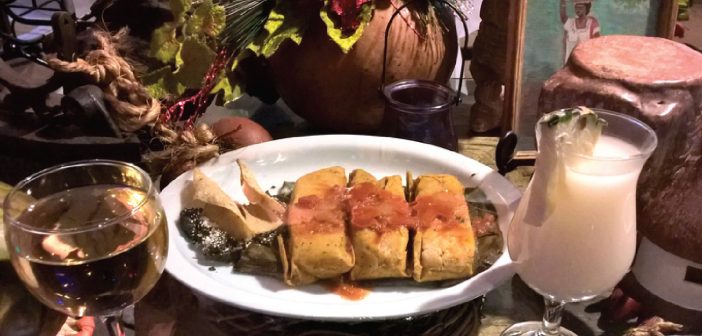The state of Quintana Roo, where most of the Riviera Maya is located, is characterised by its varied gastronomy, a mixture of fusion, Mayan and international cuisine.
Some of the region’s most typical dishes are prepared with fish from the state’s coastline and combined with influences from Belize, Caribbean and Mesoamerican Mayan culture.
Being Mexico’s main tourist area, Quintana Roo has adapted its cuisine to suit all tastes, flavours and palates, while at the same time preserving the traditions and original touches.
But what is it that you can’t miss out on trying? Here are a few recommendations.
Ceviche de Caracol
This dish is quite simple to prepare, healthy and tastes great, thanks to the unique taste of the Caribbean conch.
All you have to do is soften the raw conch, cut it into small pieces, boil it with lemon and then add the chopped vegetables: onion, tomato and habanero pepper. And that’s it! An incredibly delicious conch ceviche.
Chilmole
Its original name in Mayan is box–col, but it’s also known as relleno negro (black stuffing) due to its colour. This dish is made from a mixture of dried and burned red chillies. Before the arrival of the Spanish it was prepared with hare, wild boar, turkey or balls of corn dough, however, nowadays it’s made with turkey or balls of ground pork.
Cochinita Pibil
This dish is the result of combining Mayan tradition and Spanish influences. It’s prepared with pork marinated in achiote, a condiment that comes from a regional tree, and wrapped in banana leaves. Traditionally, it’s cooked buried in a hole in the ground over hot stones, “pibil” is a Mayan word that means buried or cooked underground.
Kibis
This dish is ubiquitous throughout the Middle East and is believed to come from Lebanon originally. It’s said that Lebanese immigrants served it to the people of Yucatec as they wanted to fit into their society.
Similar to meatballs, Kibis are made from coarse ground wheat, stuffed with minced meat and then fried to give them a crunchy texture on the outside.
A Lebanese treasure that the locals adapted and perfected!






